
The Point of Intractability
John D. Norton
Department of History and Philosophy of Science
Center for Philosophy of Science
University of Pittsburgh
This page at www.pitt.edu/~jdnorton/Goodies

What does it take to do good, novel work in philosophy of science?
One way--the hardest way--is to create an entire new subfield of philosophy of science from scratch. That is wonderful, if you can do it. Very few of us can. The most common approach is to address some existing branch of philosophy of science and seek to add to it.
You can only add to an existing branch if you have a thorough grasp of its present state.
A clear sign that you do not have this grasp is that the ideas are coming very easily. If they come easily and somehow seem obvious, you can be virtually assured that someone has already seen them and written them down.
A clear sign that you have arrived at a sufficient grasp is the opposite sense. You find that everything obvious and easy seems to be have been said. Anything new that you would like to add seems to run into one trouble or another. You seem blocked at every turn.
Do not be discouraged! You have arrived at the place were new work is done. This is what it looks like. It only once you have arrived here that you have a chance of making a novel contribution.
My purpose here is to give a more detailed characterization of what this place looks like. The key notion is the "point of intractability." You trace the development of ideas until you arrive at the point where everyone seems to get stuck. No one seems to be able to move forward.
This point of intractability can manifest in many ways. Here are two familiar ways:
("Matched forces") The simplest is when one has just two powerful arguments pulling in opposite directions, but their strengths match. You failed to be swayed by either and find yourself vacillating between them. (See paradoxes, problem of induction, grue, realism-anti-realism, direction of time below.)
("Fragmentation") Another form comes as a fragmentation in the literature. You wish to understand some topic, but find multiple competing accounts, each with its own passionate and articulate proponents. Crucially, no clear consensus has emerged. You may adopt one view, but recognize that the competing views have some advantages that your preferred view lacks. (See causation, foundations of quantum theory, representation in cognitive science)
In some cases, both "matched forces" and "fragmentation" are identifiable. (Causation, measurement in quantum theory.)
In locating these points of intractability, it is helpful to keep in mind the basic units of philosophical analysis: thesis and argument. The thesis is the claim advanced; the argument is the displaying of the grounding of the thesis, the reasons that supposedly compel acceptance of it.
Matched forces and fragmentation manifest at the level of thesis. In matched forces, there will be two mutually contradictory theses; in fragmentation there will be many of them. Noting their presence is only the beginning of identifying the point of intractability.
The important part is to identify the arguments that support each of theses. These are the forces that pull them in opposing directions. To advance beyond the point of intractability, you have to find a way of accommodating all the arguments at play.
We are at a point of intractability because there is no one thesis presently available that can do that. Proponents of the competing theses will advertise the strengths of their favored argument, while trying to escape the unfavorable consequences of the opposing arguments. The successful advance may come through a new thesis that accommodates all the arguments; or you may find a fatal flaw in one of the arguments presently in the literature.
Here are some illustrations from philosophy of science, both general philosophy of science and also the philosophy of particular sciences.
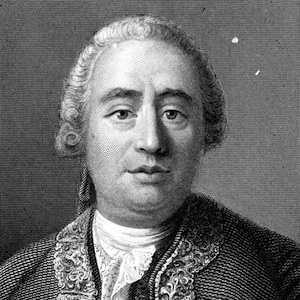
This is the classic problem of philosophy. Two forces are matched:
Inductive inference works. The marvelous discoveries of modern science depend upon repeated, successful inductive inferences.
Hume's argument. Inductive inference cannot be justified, for any justification must itself use inductive inference. That justification is circular ("Induction has always worked well, we know by induction that it will continue to do so.") or it triggers an infinite regress of inductions about inductions about inductions ...

A recent variant is:
Enumerative induction works. Every emerald we've seen is green, so we quite properly expect it to be so with all those that we have not seen.
Grue works the same way. Define grue as "green and examined before future time T; or blue." Hence, every emerald that we have seen is grue. If we assume enumerative induction works, we conclude that it will be so for every emerald, including those we have not yet examined. That leads us to conclude that these unexamined emeralds are blue.
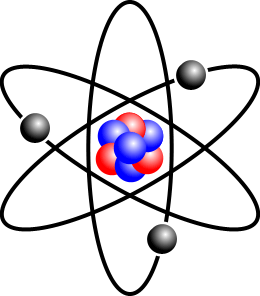
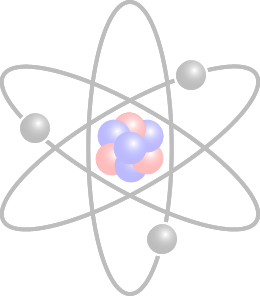
The thesis of realism, in the form I find most apt, is that we ought to construe our mature sciences literally. If they say there are atoms, electrons and species, then there really are atoms, electrons and species. The literature is controlled by two arguments that pull with great force in opposite directions.
No miracles. Science has enjoyed so much success, it would be a quite implausible miracle if its theories could thrive as they do while the theories had not attached themselves to what is real.
Pessimistic meta-induction. Science is replete with successful theories that, despite their successes, cannot be taken literally: geocentric astronomy, the phlogiston theory of combustion and nineteenth century ether theories of electricity and magnetism. We have no good basis in history to expect our latest theories to fare any better.

This is a topic rife with intractability. Here are matches forces:
Causal fundamentalism. It is one of the deepest facts of the world that it is a causally well-behaved place. This fact comes prior to any science.
Causal deflation. If the world is fundamentally causal, just what empirical fact expresses its character? After two millennia, we have been unable to find a clear and true statement of the "principle of causality."
Further problems are manifested in the proliferation of competing accounts of causation, each with complementary successes and failures:
Regularity accounts. A causes B just means that A is routinely followed by B. (empirically clean in so far as there is no metaphysical mysteries, but it tells us that day causes night)
Probabilistic accounts. A cause raises the probability of its effect. (Easy to apply in social sciences where variables are probabilistically related. Problems for non-probabilistic contexts: a gravitational field causes a body to fall--where's the probability?)
Active powers. Interventions. We identify which are the true causal processes by delimiting those in which some active power brings about the effect. (Overcomes problem of misidentifying correlation as causation, but the core notion of active power, intervention is mysterious.)
Process theories. A causal process is one in which a conserved quantity such as energy or momentum, passes from the cause to the effect (empirically based, but not all examples of causation fit)
Paradoxes have been some of the most fertile sources of new work in logic and mathematics. Resolving them has yielded entirely new branches of study. Here are two celebrated examples.

Paradoxes of infinity derive from two "matched forces."
The whole is greater than the part. In any crowd of people, there are more--twice as many--feet as there are left feet.
An infinite subset of a set can be the same size as the set. This striking result was known as early as Galileo. Consider the counting numbers 1, 2, 3, 4, ... and a subset of them, the perfect squares 1, 4, 9, 16, ... They can be matches off one-to-one
1 → 12=1 2 → 22=4 3 → 32=9 4 → 42=16 ...
so that there are exactly as many counting numbers as there are square numbers.
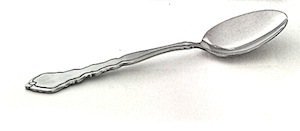
This paradox derives from two "matched forces."
"Comprehension." Any property defines a set whose members are just those things carrying the property. The property "is round" yields the set of round things.
The Russell Set. Consider the property of being a set that does not contain itself. The set of mathematical notions does not have the property, since it is itself a mathematical notion. The set of teaspoons does have the property, since set of teaspoons is a set, not a teaspoon. Use "comprehension" to create the set R of all things that carry the property; that is, the set of all sets that do not contain themselves. If you ask if that set R is a member of itself, a contradiction ensues.


There are two matched forces. One reports the directedness of processes in time as its most fundamental phenomenon. The other finds it to be invisible at the fundamental level.
Thermal processes distinguish past from future. Hot bodies spontaneously cool and unconfined gases spontaneously expand. These processes never occur spontaneously in the reverse direction. That fact is codified by the second law of thermodynamics.
Microphysics is time reversal invariant. The microscopic physics of hot bodies and gases is the physics of particles and waves; and that physics has no preferred direction of time. If the microphysics allows some process (such as the first clock above), then the microphysics allows its temporal reverse (second clock).
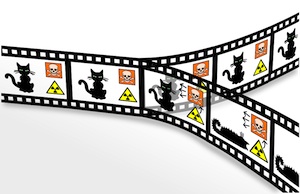
In order to recover many of the successful observational predictions of quantum mechanics, it is standard to include the supposition that when we measure a quantum system, the fact of our measuring it makes it behave in a quite different way from when we leave it alone. Unmeasured quantum systems evolve like waves, spreading if unconfined. Measured quantum systems collapse to localized measurement states.
The two matched forces are:
Success of the measurement postulate. Without it, we cannot (readily) recover the successful predictions of quantum theory.
Quantum particles cannot know they are being watched. It is radically implausible that a quantum system just "knows" which way to behave: measured or not? Wigner once suggested that measurements are distinguished by the presence of a conscious agent. It is a supposition appealing only to fringe thinkers.
Efforts to break the deadlock have produced a proliferation of proposals too large for easy synopsis here.

Two matched forces are at play:
Species are essential. The motion of species is fundamental to biology. It is the concept around which Linnaeus categorized all living things.
Species are arbitrarily delimited. Evolutionary theory tells us that all living things reside within a continuously evolving tree. We arbitrarily delimit one small portion of the tree as a species. It is a human-created category.
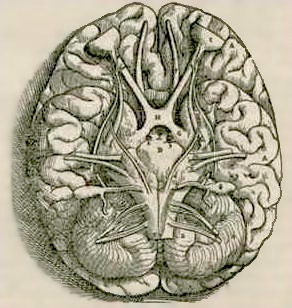
How do our minds represent things in the world? There is a proliferation of theories.
Propositional representation. Our minds encode knowledge of the world propositionally, that is, in sentences. This explains our facility with logic.
Conceptual representation. Our minds encode knowledge of the world through concepts. This explains the centrality of concepts in our thoughts, even when we find it hard to express them in words.
Mental models. Our minds are able to model systems in the world, much as computer simulations create simulacra of real systems. This explains our facility of predicting how physical systems will behave.
Deflationary view. Representational is epiphenomenal. It something we mistakenly believe important, but is actually causally inert as far as mental processes are concerned. The operation of our brains will ultimately be understood in terms of neural processes in which propositions, concepts and models play no role.
John D. Norton, Spring 2014